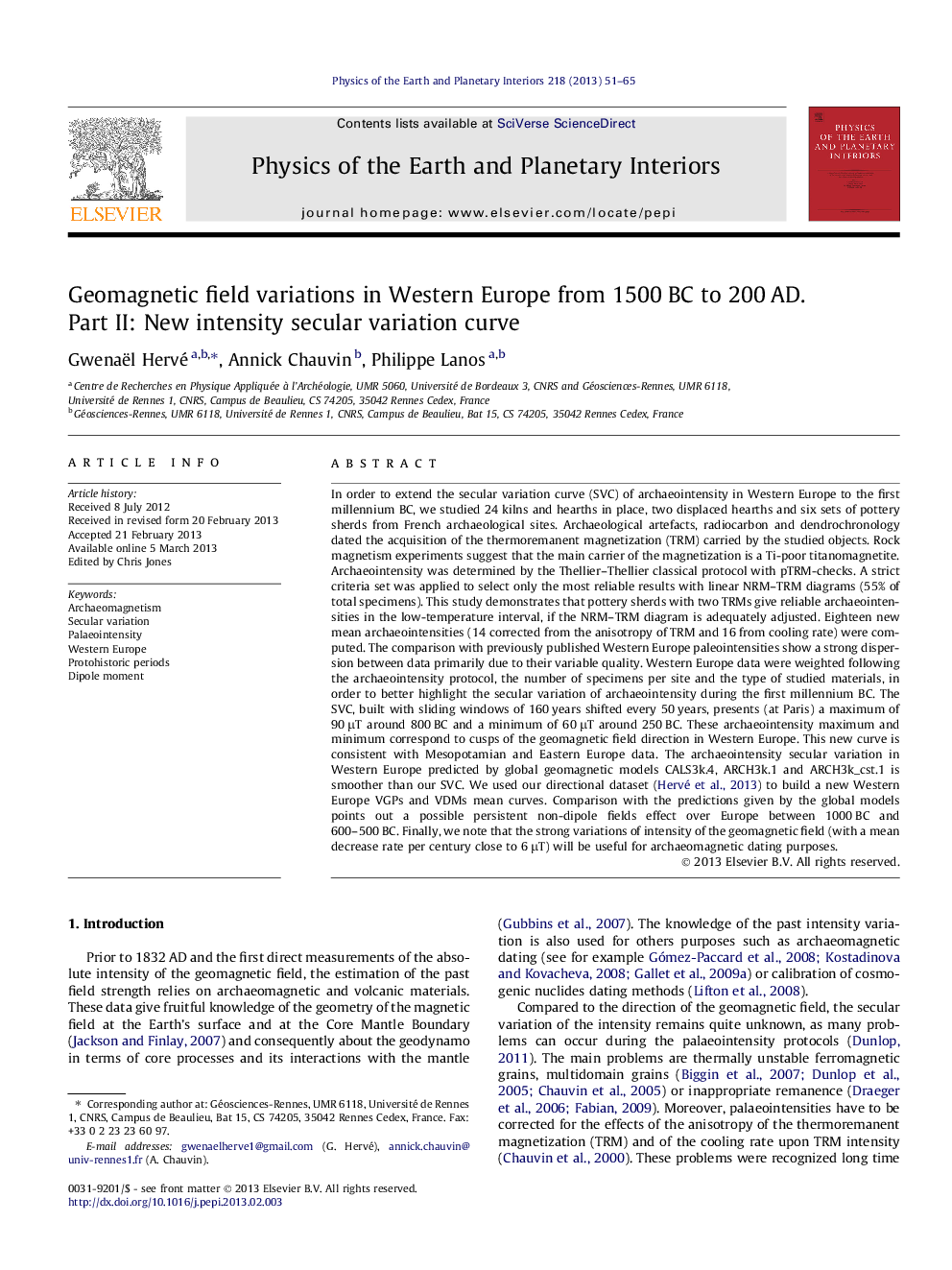| کد مقاله | کد نشریه | سال انتشار | مقاله انگلیسی | نسخه تمام متن |
|---|---|---|---|---|
| 4741705 | 1641523 | 2013 | 15 صفحه PDF | دانلود رایگان |

In order to extend the secular variation curve (SVC) of archaeointensity in Western Europe to the first millennium BC, we studied 24 kilns and hearths in place, two displaced hearths and six sets of pottery sherds from French archaeological sites. Archaeological artefacts, radiocarbon and dendrochronology dated the acquisition of the thermoremanent magnetization (TRM) carried by the studied objects. Rock magnetism experiments suggest that the main carrier of the magnetization is a Ti-poor titanomagnetite. Archaeointensity was determined by the Thellier–Thellier classical protocol with pTRM-checks. A strict criteria set was applied to select only the most reliable results with linear NRM–TRM diagrams (55% of total specimens). This study demonstrates that pottery sherds with two TRMs give reliable archaeointensities in the low-temperature interval, if the NRM–TRM diagram is adequately adjusted. Eighteen new mean archaeointensities (14 corrected from the anisotropy of TRM and 16 from cooling rate) were computed. The comparison with previously published Western Europe paleointensities show a strong dispersion between data primarily due to their variable quality. Western Europe data were weighted following the archaeointensity protocol, the number of specimens per site and the type of studied materials, in order to better highlight the secular variation of archaeointensity during the first millennium BC. The SVC, built with sliding windows of 160 years shifted every 50 years, presents (at Paris) a maximum of 90 μT around 800 BC and a minimum of 60 μT around 250 BC. These archaeointensity maximum and minimum correspond to cusps of the geomagnetic field direction in Western Europe. This new curve is consistent with Mesopotamian and Eastern Europe data. The archaeointensity secular variation in Western Europe predicted by global geomagnetic models CALS3k.4, ARCH3k.1 and ARCH3k_cst.1 is smoother than our SVC. We used our directional dataset (Hervé et al., 2013) to build a new Western Europe VGPs and VDMs mean curves. Comparison with the predictions given by the global models points out a possible persistent non-dipole fields effect over Europe between 1000 BC and 600–500 BC. Finally, we note that the strong variations of intensity of the geomagnetic field (with a mean decrease rate per century close to 6 μT) will be useful for archaeomagnetic dating purposes.
► We present 18 new archaeointensities from France dated in the first millennium BC.
► Pottery sherds with two components of magnetization give reliable intensities.
► We built the first intensity SVC for the first millennium BC in Western Europe.
Journal: Physics of the Earth and Planetary Interiors - Volume 218, May 2013, Pages 51–65